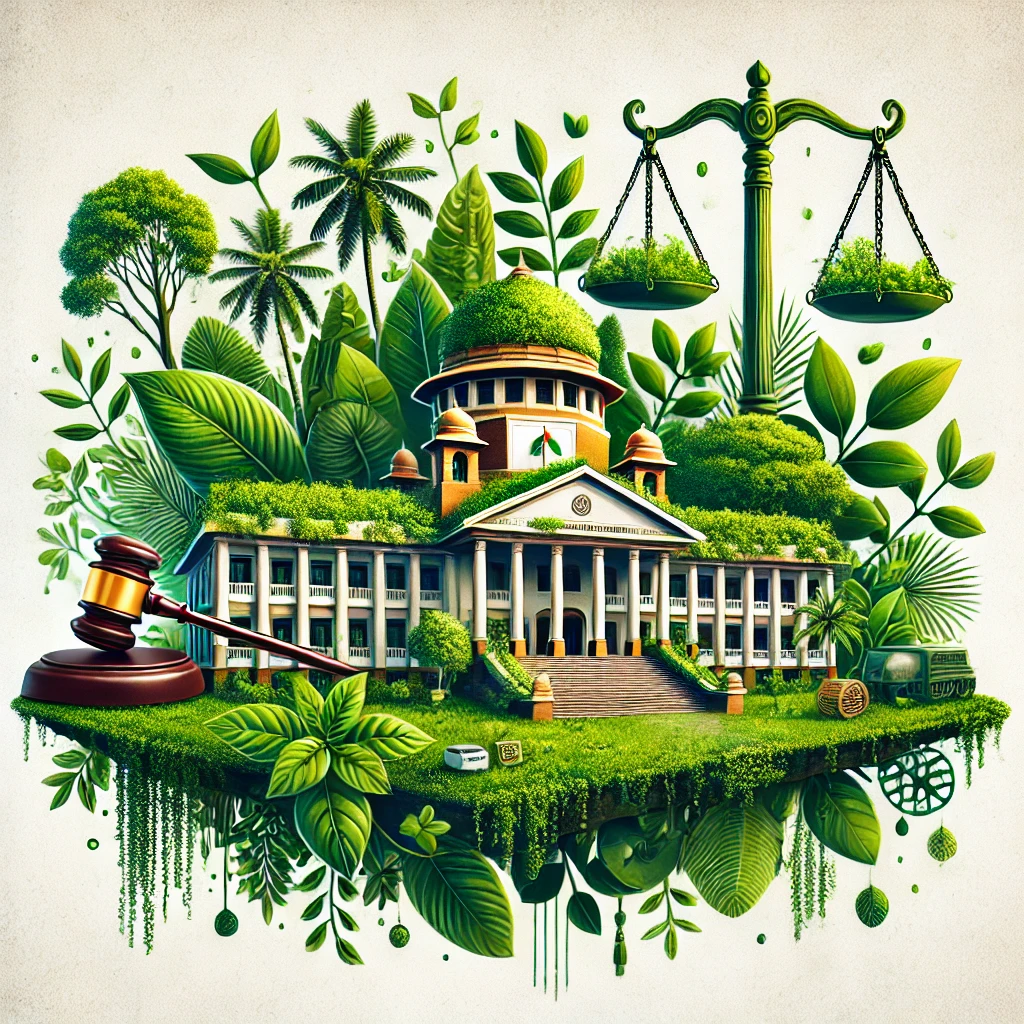Environmental laws at Guinea
Guinea, located in West Africa, is home to a diverse environment that includes tropical forests, savannahs, and significant mineral resources. The country faces several environmental challenges, including deforestation, soil erosion, pollution, and the effects of climate change. In response to these challenges, Guinea has enacted a variety of environmental laws and regulations to protect its natural resources and promote sustainable development. Below is an overview of the environmental laws and regulations in Guinea:
1. The Environmental Code of Guinea (2000)
The Environmental Code of Guinea (2000) is the cornerstone of the country's environmental legal framework. It aims to ensure the sustainable use of natural resources and to safeguard Guinea’s environment for current and future generations.
Environmental Impact Assessment (EIA): The Environmental Code requires that an Environmental Impact Assessment (EIA) be conducted for any major development project that may have significant environmental consequences. This applies to sectors such as mining, infrastructure development, and agriculture.
Pollution Control: The Code sets out measures for controlling environmental pollution, including air, water, and soil pollution. It mandates pollution monitoring and the establishment of pollution control measures for industries and commercial activities.
Biodiversity Protection: The Code provides for the protection and conservation of biodiversity, including the establishment of protected areas and the sustainable management of wildlife and forest resources.
2. The Mining Code (2011)
Guinea has vast mineral resources, including bauxite, gold, and iron ore. The Mining Code (2011) governs the exploration, extraction, and management of these resources, ensuring that mining activities are carried out in an environmentally responsible manner.
Sustainable Mining Practices: The Mining Code requires mining companies to adhere to sustainable mining practices, ensuring that mining operations do not cause significant environmental degradation.
Environmental Impact Assessments (EIA): As with other major development projects, the Mining Code mandates that mining projects undergo an EIA to assess potential environmental impacts before approval.
Rehabilitation of Mining Sites: The Code requires mining companies to rehabilitate mining sites once operations are concluded, ensuring that the land is restored to a state that minimizes environmental harm.
Pollution Prevention: The Mining Code includes provisions for the control of water and air pollution associated with mining activities, including regulations on the disposal of mining waste.
3. The Forest Code (2013)
The Forest Code (2013) regulates the management, conservation, and utilization of Guinea’s forest resources, which are vital for biodiversity, climate regulation, and the livelihoods of local communities.
Forest Conservation: The Forest Code establishes regulations to prevent illegal logging and deforestation, aiming to protect Guinea’s forests from unsustainable exploitation.
Community Participation: The Code encourages the involvement of local communities in the management of forests, particularly through the establishment of community-managed forests.
Forest Protection: The Code designates protected areas, including national parks and forest reserves, to conserve biodiversity and ensure the sustainability of forest ecosystems.
Sustainable Timber Harvesting: The law regulates the sustainable harvesting of timber, ensuring that logging activities do not deplete forest resources or cause long-term ecological harm.
4. The Water Code (2002)
The Water Code (2002) governs the management, protection, and sustainable use of water resources in Guinea. It aims to address issues such as water scarcity, pollution, and equitable access to water.
Water Resource Management: The Water Code establishes rules for the management and distribution of water resources, both for human consumption and agricultural, industrial, and recreational use.
Pollution Prevention: The Code mandates that industries and municipalities treat wastewater before discharging it into water bodies to prevent water pollution.
Water Conservation: The law encourages water conservation measures and the efficient use of water resources, particularly in light of changing climate conditions.
5. The National Biodiversity Strategy and Action Plan (NBSAP)
Guinea has developed the National Biodiversity Strategy and Action Plan (NBSAP) as part of its commitment to international biodiversity conservation agreements, such as the Convention on Biological Diversity (CBD).
Conservation of Species and Ecosystems: The NBSAP outlines strategies for conserving the country’s biodiversity, focusing on the protection of endangered species and the preservation of critical ecosystems, such as wetlands and forests.
Invasive Species Management: The plan addresses the threat posed by invasive species, developing strategies to prevent their spread and mitigate their impact on native biodiversity.
Sustainable Use of Biodiversity: The NBSAP promotes the sustainable use of biodiversity, including the responsible management of natural resources like timber, medicinal plants, and wildlife.
6. The Climate Change Policy (2011)
Guinea has developed a Climate Change Policy (2011) to address the growing impacts of climate change, particularly its effects on agriculture, water resources, and coastal areas.
Climate Change Adaptation: The policy focuses on building resilience to climate change impacts, particularly in vulnerable sectors such as agriculture, water management, and infrastructure.
Mitigation Measures: It outlines actions to mitigate climate change, including reducing greenhouse gas emissions through reforestation, promoting renewable energy, and improving energy efficiency.
Public Awareness and Education: The policy includes measures to raise public awareness about climate change and encourage the adoption of sustainable practices at the community level.
7. The Act on Pollution and Waste Management (2007)
The Act on Pollution and Waste Management (2007) addresses the growing issue of pollution and waste management in Guinea.
Waste Management: The law regulates the collection, disposal, and recycling of solid and hazardous waste, particularly in urban areas like Conakry, where waste management is a significant issue.
Pollution Control: The Act sets out standards for air and water quality and mandates industries to control and reduce their emissions and effluents.
Environmental Penalties: The law imposes penalties on individuals and businesses that fail to comply with pollution control regulations, with the aim of reducing pollution levels across the country.
8. The Environmental Protection Agency (EPA)
The Environmental Protection Agency (EPA) is the key government body responsible for enforcing environmental laws in Guinea. The EPA's mandate includes:
Environmental Oversight: The EPA is responsible for overseeing compliance with environmental laws and regulations, including the review and approval of Environmental Impact Assessments (EIA).
Monitoring and Enforcement: The Agency monitors pollution levels, conducts environmental audits, and ensures that companies and industries comply with environmental regulations.
Public Awareness: The EPA plays a key role in educating the public about environmental issues, including pollution prevention and conservation.
9. The Law on Protected Areas (2005)
This law regulates the establishment and management of protected areas in Guinea, including national parks, reserves, and wildlife sanctuaries.
Conservation of Ecosystems: The law is aimed at conserving Guinea's diverse ecosystems, particularly in regions such as the Mount Nimba region, which is recognized as a UNESCO World Heritage Site.
Regulation of Human Activities: In protected areas, activities such as hunting, logging, and agriculture are restricted to prevent degradation of ecosystems.
Community Involvement: The law emphasizes the role of local communities in the management of protected areas, ensuring that they benefit from conservation efforts and sustainable tourism.
10. The Forest and Wildlife Management Act (2010)
This law is designed to regulate the management and conservation of Guinea's wildlife and forest resources.
Wildlife Protection: It provides for the protection of endangered species and regulates hunting and fishing activities, particularly in national parks and reserves.
Sustainable Forest Management: The law promotes the sustainable management of forest resources, including the prevention of illegal logging and the regulation of timber exports.
Key Environmental Institutions in Guinea:
The Ministry of Environment, Water, and Forests: This ministry is responsible for formulating and implementing environmental policies and laws, including the management of water resources, forests, and wildlife.
The Environmental Protection Agency (EPA): The EPA is tasked with enforcing environmental regulations and ensuring that environmental impact assessments are conducted for development projects.
The Guinea National Forests and Waters Institute: This institute conducts research on forest and water resources and supports sustainable land and resource management.
The National Institute of Biodiversity: This institute is responsible for monitoring and conserving biodiversity in Guinea, including the implementation of the National Biodiversity Strategy and Action Plan (NBSAP).
Challenges in Environmental Law Enforcement:
Despite having a solid framework for environmental governance, Guinea faces several challenges in enforcing its environmental laws:
Weak Enforcement Capacity: There is a lack of financial and technical resources to effectively monitor environmental laws, particularly in remote areas.
Illegal Activities: Illegal logging, poaching, and unregulated mining remain significant threats to Guinea’s environment.
Climate Change: Guinea is vulnerable to the impacts of climate change, including changes in rainfall patterns and more frequent droughts, which complicate the management of natural resources.
Corruption: Corruption and lack of political will can undermine efforts to enforce environmental laws and regulations, especially when economic interests (e.g., mining, logging) are at stake.
Conclusion:
Guinea has enacted a range of environmental laws and policies aimed at protecting its natural resources, promoting sustainable development, and addressing the impacts of climate change. Key pieces of legislation, including the Environmental Code, Mining Code, Forest Code, and Water Code, lay a strong foundation for environmental protection in the country. However, enforcement challenges such as limited resources, illegal activities, and climate change impacts continue to pose significant hurdles. Strengthening the capacity of environmental institutions, improving public awareness, and fostering international cooperation will be essential for ensuring the effective implementation of environmental laws in Guinea.




























0 comments